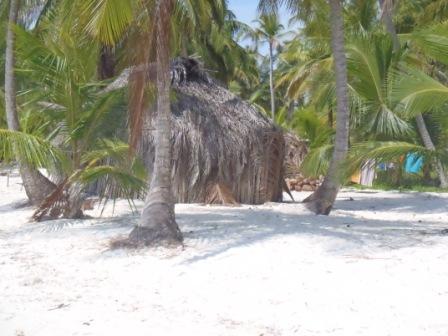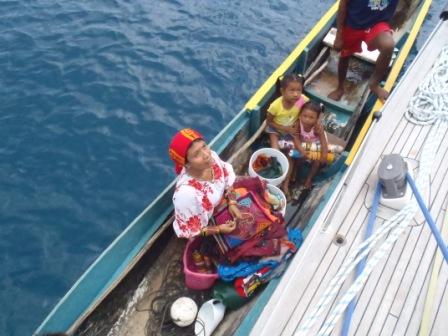Kuna Yala, Pax Americana, and Scottish independence

VulcanSpirit
Richard & Alison Brunstrom
Thu 23 Feb 2012 00:36
|
The very peaceful Kuna Indians migrated to the
coast here not long before Columbus arrived. In 1925, shortly after
Panama gained its independence from Columbia they got fed up with Panamanian
efforts to suppress their culture and revolted. Amazingly, instead of crushing
the revolt the young Panamanian government called in the USA to
mediate, and even more astonishingly the USA did not send in the troops. The US
Ambassador negotiated a peace deal which gave the Kuna complete autonomy in
their tribal area, Kuna Yala, although they remain Panamanian citizens. Perhaps
modern American Presidents could learn from this. The deal has stuck and the
Kuna have kept much of their culture and way of life intact - and their
environment. There are no roads in Kuna Yala and almost no
electricity.
The Kuna are organized into villages with
elected chieftains - who are thrown out and replaced if they don't do a good
enough job. Human nature being what it is villages are varyingly strict about
adhering to the traditional lifestyle. Each family spends a couple of
months a year harvesting coconuts on an island and the rest of the time farming
the village plots on the mainland. Here is a typical Kuna island hut - no
electricity, no running water.
 Travel is mostly by dugout canoe - rainforest trees
are used. Canoes are mostly paddled, or sailed; but outboard engines are
seen too. Here are a couple of guys selling fresh fish, lobster & octopus
from their canoe. The sail is technically a spritsail, with the corner held up
by a diagonal sprit (which you can see through the sail) to increase sail
area with a short mast. The spars are all sticks, the rope homemade and the
canoe itself literally a hollowed-out log. A good bailer is an essential piece
of kit. How they don't capsize is a complete mystery to me - the crew must have
a tremendous sense of balance.
 The Kuna are renowned for their 'molas' - patterned
cloths. Technically they are reverse applique, but I don't know what that means.
Lots of layers of cloth beautifully stitched together. Here is a lady (in a
large dugout) in the process of selling us a mola that she made herself for
$20.
 And here it is:
 Traditionally the designs were entirely abstract
but in the last fifty years recognisable objects have begun to appear.
And Scotland? Well, in 1702 and 1703 the then
independent Scots tried to establish a colony in what is now Kuna Yala. It
was a complete disaster. Of the 3000 colonists 2000 died, mostly of yellow
fever. The expense bankrupted Scotland and as a direct result the Scottish
Parliament passed the Act of Union and Scotland joined with England. The
Scottish Parliament abolished itself.
|